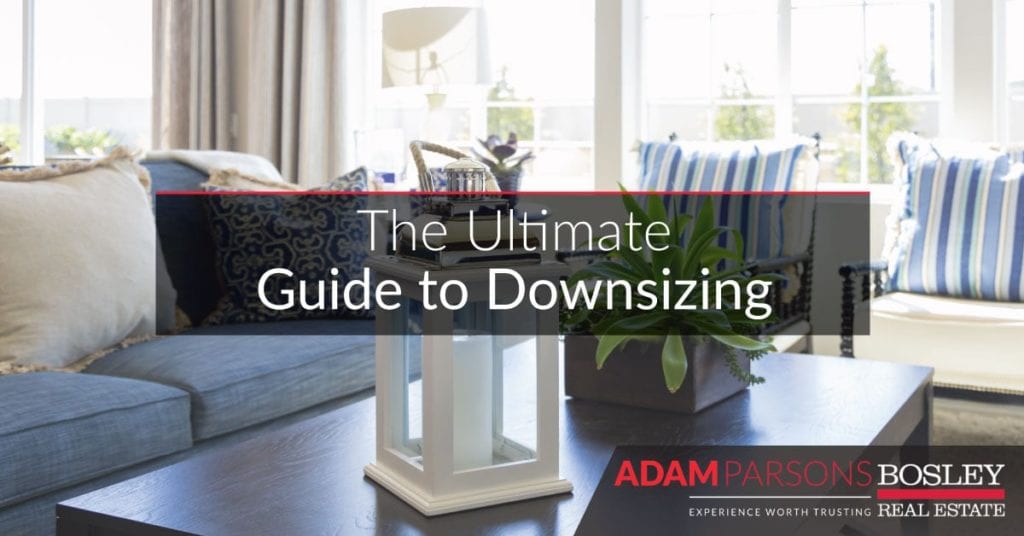
The Ultimate Guide to Downsizing
Are you ready to move into a condo with your significant other? Perhaps you’re an empty-nester, and you no longer need a big house. Whatever your reason for choosing a smaller space, you’re embracing the opportunity to simplify your life.
As with many life changes, there are both pros and cons to downsizing. The process can come with many practical (and even psychological) challenges. But with careful planning and some good advice, you can overcome them to create a cozy, chaos-free home. Read our downsizing home checklist to learn how.
Do the math
First, you need to figure out how much you want to spend. This step is especially important if saving money is your main motivation for downsizing.
Start by creating a detailed budget that breaks down how much it’s costing you to live in your current home. Make a list of all relevant costs—such as property taxes, ongoing repairs, and utilities—and tally them up.
Once you know how much you’re currently spending, consider how much you’d ideally like to save. Chances are, you have some ideas about the location, features, and amenities you’d like. When you’re doing your research, look beyond sticker prices and consider average added costs for units that fit your criteria.
For example, when it comes to average condo maintenance fees in the GTA, the most recent figure is 65 cents per square foot. Costs like these add up quickly. But in most cases, even if you’re living in a mortgage-free house, you’ll find that a condo or townhouse will wind up costing you less (though there are exceptions to this rule).
Work with the right people
Next up on our downsizing home checklist, find the right financial advisor and real estate agent.
What, exactly, can you afford? A qualified advisor will look at your current financial situation and your future goals. They’ll help you figure out next steps and inform you of tools (such as specific payment or savings plans) that could help.
Then comes your home hunt. You’ll have a thousand questions once you start looking, and most of them will be best answered by a real estate professional.
How much would you likely make if you sold your house right now? Should you carry out any improvements before listing? What kind of property taxes could you expect to pay on that Davisville Village condo that’s caught your eye? And then there’s one of the most important questions of all: should you sell your current home before buying a new one?
The right agent will answer your questions and help you make more informed decisions. For a low-stress transition, look for someone who has experience working with downsizers.
Declutter and donate
Getting rid of belongings—even those that you no longer use—can be hard. But parting with old clothing, books, furniture, and other items can also provide a sense of freedom. Start by creating a timeline for yourself, which should include tasks such as scheduling a pick-up or drop-off time for your donations.
Depending on how much stuff you need to get rid of, you’ll want to start getting organized at least a month in advance of your move. Move forward by sorting your belongings according to whether you want to keep, toss, or donate them.
Measure everything
This is an important step, and it’s one that first-time downsizes often forget. You’ll want to carefully measure your new home along with any furniture that you’re planning to put in it.
When you’re measuring, remember that you’ll need to include the space you’ll leave around each piece of furniture. Without proper spacing, your new home will feel cramped and uncomfortable. Here are just a few dimensions to remember (you can find a more complete list here).
• 36 inches between your dining room table and the wall
• 48 inches between your table and the entranceway to the room
• 18 inches between a coffee table and a couch
• 3.5 feet (at least) between living room chairs and/or couches
• 7 feet between a t.v. and a couch or chair
Get creative with storage
Last but not least, plan to do more with your space. Find creative ways of maximizing your storage to minimize clutter. Here’s just are just a few ideas that might want to consider.
Use vertical space
Take advantage of wall space by using them to hang storage baskets and cube shelves.
Buy furniture with hidden storage
Look for furniture that contains secret storage, such as footstools that open up and beds with drawers underneath.
Use hooks and racks
When furniture storage is limited, consider hanging more of your towels and clothing on stylish wall hooks and racks.
Preparing to move into a smaller space? I’ve helped many people downsize to find homes they love with minimal stress. Get in touch to discuss your needs and learn more about the process!


